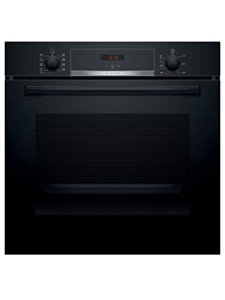Everything You Need To Learn About Built In Oven
The Comprehensive Guide to Built-In Ovens
Introduction
Built-in ovens are a staple in modern-day kitchen areas, integrating beauty with performance. They use a streamlined aesthetic and effective cooking capabilities, making them a preferred option for house owners and cooking lovers alike. This short article looks into the benefits of built-in ovens, their different types, essential functions to consider, setup tips, and maintenance advice, together with frequently asked questions.
Advantages of Built-In Ovens
Built-in ovens come with a variety of benefits that add to their appeal. Here are some essential advantages:
- Space-Saving Design: Built-in ovens are developed to fit effortlessly into cabinetry, enabling a more orderly and space-efficient kitchen layout.
- Visual Appeal: They offer a sleek and modern appearance that can improve the total style of the kitchen.
- Improved Functionality: Built-in ovens often feature sophisticated functions and innovations that support various cooking methods.
- Improved Cooking Experience: Many built-in models include self-cleaning functions, temperature level probes, and programmable settings, enhancing the cooking experience.
- Increased Property Value: A properly designed kitchen with built-in appliances can boost the worth of a home.
Types of Built-In Ovens
Built-in ovens can be found in numerous types, each designed to satisfy different cooking choices and needs. Here are the main types:
Type of Built-In Oven
Description
Single Oven
A single, standalone oven for standard baking and roasting.
Double Oven
Integrates two ovens in one system, permitting several meals to prepare at different temperature levels.
Wall Oven
Installed in the wall, maximizing counter area, suitable for small kitchen areas.
Stove
Uses fans to circulate hot air for even cooking, enhancing the outcomes of baked items.
Steam Oven
Uses steam for healthier cooking options, preserving nutrients in food.
Secret Features to Consider
When picking a built-in oven, several features can impact efficiency and usability. Here are some important features to keep in mind:
Cooking Modes
- Bake: Traditional baking with bottom heat.
- Broil: Top heat cooking appropriate for browning and crisping.
- Convection: Circulates hot air for even cooking.
- Steam: Uses steam for much healthier cooking choices.
Size and Capacity
- Requirement sizes generally range from 24 to 30 inches wide.
- Think about the internal capability— it can range from 3 to 6 cubic feet, enabling various meal sizes.
Controls and Smart Features
- Touchscreen Controls: Easy programs and adjustments.
- Smart Technology: Connectivity features allow for remote tracking and control via smartphone applications.
Energy Efficiency
- Search for designs with ENERGY STAR scores, indicating lower energy intake.
Security Features
- Functions like auto shut-off and kid locks boost safety throughout operation.
Setup Tips
Setting up a built-in oven might require expert support, but here are some basic pointers to keep in mind:
- Choose the Right Location: Ensure there's sufficient space in your cabinets for installation, bearing in mind ventilation requirements.
- Electrical Requirements: Check that your kitchen's electrical wiring satisfies the oven's power requirements, specifically for electric models.
- Level the Oven: Ensure the oven is level to promote even cooking.
- Protect the Oven: Attach it firmly to the cabinets to avoid movement throughout use.
Maintenance Advice
Routine maintenance is essential for the durability and performance of a built-in oven. Here's how to keep it in top shape:
- Regular Cleaning: Wipe down surface areas after each use and perform deep cleansing regularly.
- Examine Seals: Inspect door seals for wear and ensure they preserve an airtight fit to enhance energy performance.
- Calibrate Temperature: If food consistently comes out overcooked or undercooked, think about recalibrating the oven's temperature settings.
- Expert Servicing: Schedule annual check-ups with a skilled specialist to preserve optimal performance.
Frequently asked questions
What is the difference between a built-in oven and a freestanding oven?
Built-in ovens are created to be installed within kitchen cabinetry, using a smooth look. In www.ovensandhobs.uk , freestanding ovens are standalone systems that usually include their own cooktop.
Are built-in ovens more expensive than freestanding designs?
Usually, built-in ovens can be more pricey due to the included installation costs and advanced features. However, costs differ widely based on brand, size, and functionalities.
Can I install a built-in oven myself?
While it is possible to install a built-in oven yourself, it is suggested to work with an expert to make sure proper setup, specifically if modifications to cabinetry or electrical work are required.
How often should I clean my built-in oven?
It is a good idea to clean your built-in oven frequently after heavy usage. For much deeper cleansings, utilize the self-cleaning function if offered or periodically perform manual cleaning to prevent accumulation.
Built-in ovens are an important addition to any kitchen, using both aesthetic appeal and advanced cooking abilities. By understanding their types, functions, setup, and upkeep requirements, house owners can make informed options that enhance their cooking experience and boost the total value of their homes. As kitchen styles continue to develop, built-in ovens will likely remain a popular option for modern homes.
